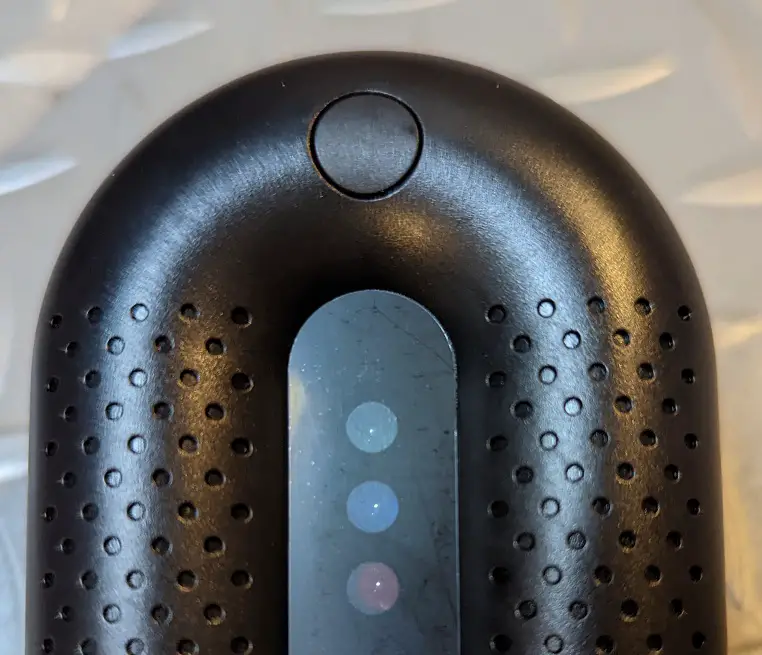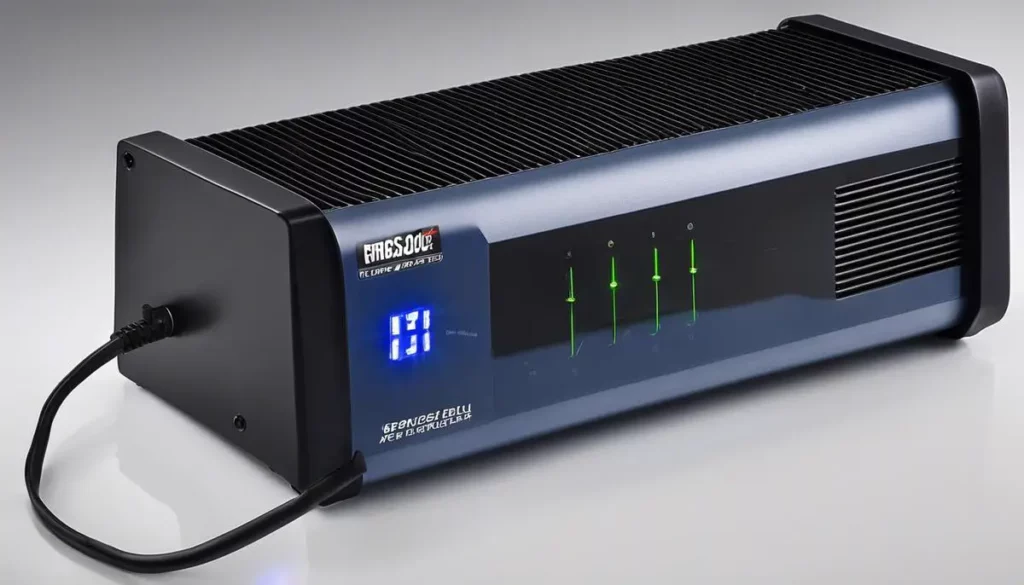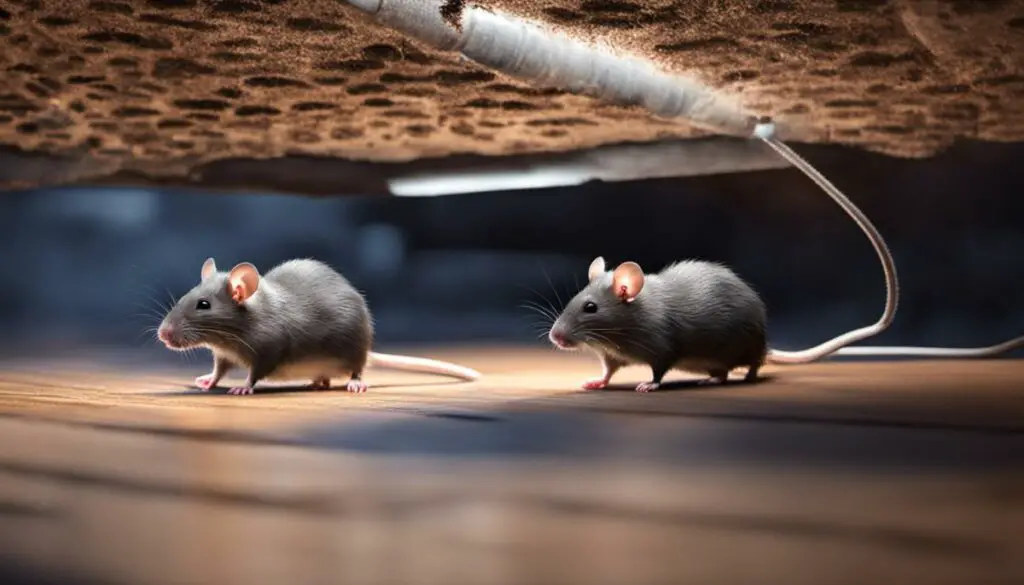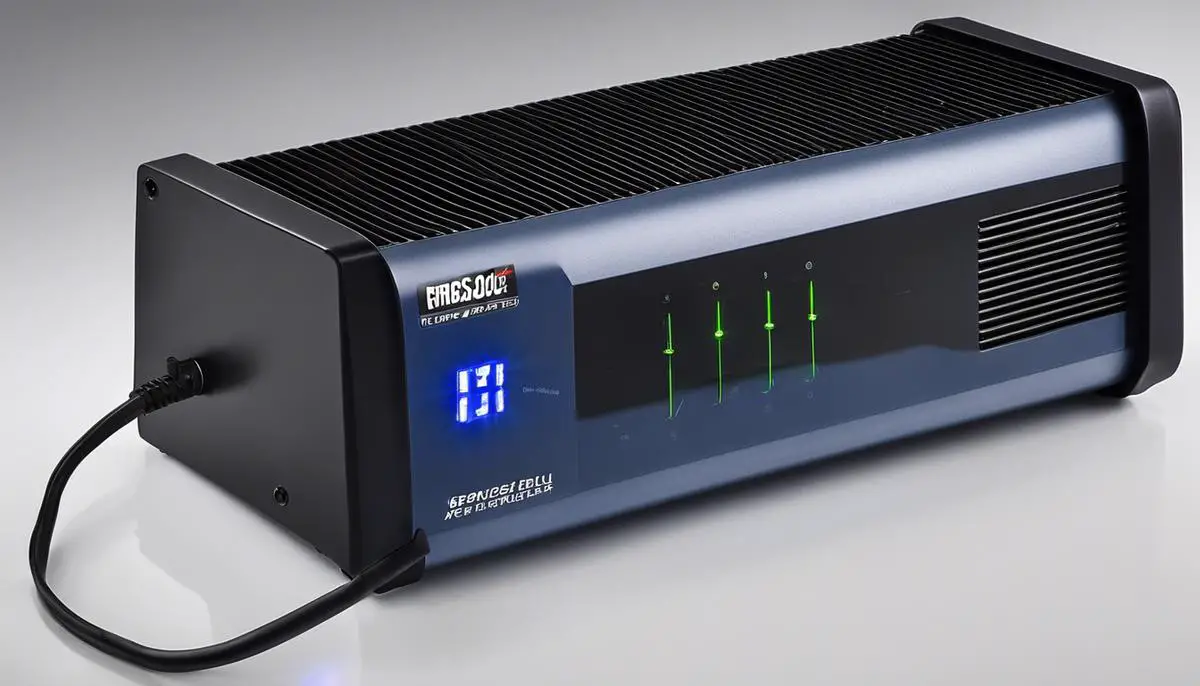As technology continues to advance in many sectors of our lives, one area that has seen significant innovation is in the realm of pest control, specifically through the use of ultrasonic rat repellers. Ultrasound, traditionally used in various fields, from medicine to maritime navigation, has found a practical application in mitigating rodent problems.
By harnessing the unique properties and behaviors of ultrasonic waves, rat repellants aim to create an exceedingly uncomfortable environment for these pests, thereby deterring their presence. This post will explore the rudiments of ultrasonic waves, their interaction with our environment, and how they are utilized in constructing electronic rat deterrents.
Understanding Ultrasonics
Unraveling the Science Behind Ultrasonic Waves: A Tech Enthusiast’s Perspective
The topic of ultrasonic waves often stirs intrigue in most tech circles. To fully appreciate the innovative applications of ultrasonic technology in today’s world, delving into the science behind these high-frequency sound waves is a must. Let’s dive straight into it.
Ultrasonic waves, or ultrasound, technically stem from sound waves with frequencies above the human audible range—typically anything over 20 kHz. Rooted in the compelling arena of acoustics, they form when vibrations generate a pressure wave through a medium such as gas, liquid, or solids. So, it’s about movement and energy transmission; the vibrations move back and forth at a very high speed, creating these waves that our ears can’t capture but specialized equipment can.
When discussing wave propagation – a crucial facet of science – ultrasonic waves behave similarly to regular sound waves; they reflect, refract, and diffract. A key difference, however, lies in their wavelength and frequency. Higher frequency results in shorter wavelengths, which, in turn, allows for finer resolution in imaging applications, such as medical ultrasound.
How exactly does this work? To be precise, it’s all about the Doppler effect. This intriguing phenomenon amplifies the frequency of a wave when the source and the observer are moving closer together and diminishes it when they’re moving apart. If you’ve noticed the pitch of an ambulance siren changing as it passes by, that’s the Doppler effect in action. In medical technology, it’s harnessed to create real-time, detailed images of our body’s insides – a significant leap in non-invasive diagnostic procedures.
Ultrasonic waves also find use in non-destructive testing, another testament to their versatile nature. Since these waves can propagate through materials and reflect off flaws or interfaces, they help detect internal defects or irregularities in different materials – an invaluable tool in industries like aerospace and automotive. Ultrasonic cleaning utilities offer another interesting application, using high-frequency waves to agitate a liquid medium, successfully dislodging dirt and contaminants clinging on to surfaces.
The business landscape is rife with the practical use-cases of ultrasonic technology – from eclectic domains like pest control humidification to the vast realm of data transmission. High-frequency sound waves can carry data over short distances, offering a simple, secure alternative to traditional radio-frequency methods. Talk about science symbiotically enhancing life right there!
So there you have it! In the tech enthusiast’s world, the science behind ultrasonic waves goes beyond mere acoustics; it’s a fascinating domain where physics intertwines with cutting-edge technology to fuel never-seen-before innovations. Understanding this science not only satisfies our technical curiosity but also opens the door to limitless possibilities that this sound wave above human hearing capabilities holds for future advancements. It’s indeed a thrilling time to be alive, reveling in the transformative potential of technology.

Mechanism of Ultrasonic Rat Repellers
Diving deeper into the world of ultrasonic technology, let’s explore a specific application that is becoming increasingly popular – ultrasonic rat repellers. In the midst of a growing rat population and subsequent infestations, several people are naturally seeking unobtrusive ways to deter these pests. But how exactly do these ultrasonic rat repellers work? And, more crucially, do they actually get the job done?
Ultrasonic rat repellers work by emitting a high-frequency sound that’s imperceptible to humans but distressing for rats. These devices operate in a frequency range of above 20kHz, distinctly beyond the range audible to humans. It’s worth noting that rats have a highly developed sense of hearing and can detect frequencies ranging from 500Hz to 80kHz.
Upon activation, the ultrasonic rat repeller sends out ultrasonic waves in a series of variable frequencies. This is a key feature as rats, being intelligent creatures, can eventually become acclimated to a single, unchanging frequency. The changing frequencies keep the rats disoriented and uncomfortable, encouraging them to seek a less annoying environment.
Picture the ultrasonic rat repeller functioning somewhat like an annoying flickering light that deters any comfortable settlement. The high-frequency noise is continuous, creating an unbearable living situation for the pests.
But what’s the catch? As with any technology, ultrasonic rat repellers come with certain limitations. These devices are limited by their effective range, typically around 80 to 120 square meters, and they do not penetrate walls or other solid barriers. This makes the positioning of the device crucial.
Furthermore, the efficacy of ultrasonic waves can also be negatively influenced by certain surfaces, such as sound-absorbing materials like carpets and curtains – much like the way these materials affect audible sound.
Finally, let’s address the elephant (or rather, the rat) in the room. Do these devices genuinely work? The answer isn’t a straightforward one. While some users report success, others find them ineffective. It seems the specific environmental factors significantly impact the effectiveness, suggesting there isn’t a one-size-fits-all solution in rat repelling technology.
However, the quest for efficient rat-repelling technology is far from over. With the continued advancement in technology, and specifically in ultrasonic waves, more effective and efficient solutions are always on the horizon. The key lies in understanding the nuances and combining ultrasonic technology with other repellent strategies.
In conclusion, ultrasonic rat repellers stand as a testament to technological ingenuity and an example of how science and technology can come together to tackle everyday challenges. They have their limitations, certainly, but they also represent a new wave (pun intended) of potential and opportunity in leveraging the power of ultrasonic waves. The world of ultrasonic technology is proving to be more than what meets the ear!

Effectiveness and Limitations
Moving from the more general aspects of ultrasonic technology to a specific application, let’s delve deeper into ultrasonic rat repellers, a fascinating instance of tech combatting pests. As the name implies, these devices emit ultrasonic waves intending to disrupt, repel, and deter rats, leveraging the distinct frequency sensitivity between rodents and humans.
An ultrasonic rat repeller operates on a simple yet scientific principle. A small device generates high-frequency sound waves that are inaudible to humans but extremely disruptive and unpleasant to rats. Just like a constant flickering light can cause discomfort and annoyance to us, the high-frequency noise irritates rats, making the environment intolerable for them.
However, it’s highly significant that these devices utilize variable frequencies within the audible range for rats, which extends up to 90 kHz. Frequency variation is crucial because, like humans, rats can become accustomed to constant sounds. By varying the frequency, the repeller ensures unpredictability, depriving the rats of the opportunity to adjust to the disturbance.
Despite the innovative concept, ultrasonic rat repellers are not without limitations. Factors such as range and physical barriers can significantly impact their effectiveness. Ultrasonic waves, like light rays, travel in straight lines and hence cannot traverse walls or furniture. Therefore, open spaces provide the best working environments for these devices, eliminating physical interruptions that can absorb or reflect the ultrasonic waves.
Additionally, the effectiveness of ultrasonic waves can also be influenced by the surrounding surfaces, which further absorb or reflect the waves, interfering with their radius of impact. Rough surfaces like carpets can readily absorb ultrasonic waves, while smoother surfaces reflect them.
Moreover, the reported success of ultrasonic rat repellers significantly varies from user to user. Some attribute this to environmental factors, including the architectural features of the house, the number of rodents, and their nesting locations. The absence of a universal standard for success creates discrepancies in user experience, affecting the overall perception of the product’s effectiveness.
In exploring further technological innovations, the quest for more efficient rat-repelling technology remains ongoing. Recent advancements suggest supplementing ultrasonic devices with other deterrent strategies to increase effectiveness. By combining ultrasonic repellers with scent or taste-based deterrents, the chances of successfully driving rats away heightened.
In conclusion, ultrasonic waves indeed showcase significant potential in pest control, specifically in repelling rats. While technological advancements are progressively addressing the existing limitations, they continue to present a fascinating blend of physics and technology. Though not infallible, ultrasonic rat repellers uphold the promising prospects of incorporating ultrasonic technology into our everyday lives. The limitations and challenges they pose only drive us further into harnessing the full power and capabilities of this futuristic technology.

Innovations and Future Trends
Following this deep-dive into the mechanics of ultrasonic technology and rat repellers, let’s shift gears and focus on the latest innovations and future trends in this fascinating niche.
But first, it’s important to state that existing ultrasonic rat repellers do abide by scientific principles, and their effectiveness is, to an extent, proven. However, like all technology, there is always scope for evolution and enhancements.
Recent years have seen a proliferation of solar-powered ultrasonic rat repellers. These eco-friendly devices, featuring solar panels, convert sunlight into electricity, maintain the device’s operation without any manual intervention, and maximize sustainability. Ground-breaking, isn’t it?
What’s more, with the amalgamation of artificial intelligence (AI) with almost every aspect of life, pest control isn’t far behind. The integration of AI with ultrasonic rat repellers could help optimize the frequency range based on the pest’s response. This adaptability to pests’ habits and their evolving resistance will make the repellers more effective over time, dramatically improving pest control efficiency.
Another ground-breaking innovation that’s under exploration is the integration of pest species identification features in ultrasonic repellers. This advancement would allow the device to emit a specific frequency according to the detected species, enhancing its effectiveness and minimizing the collateral impact on other non-target species.
Moreover, IoT (Internet of Things) is set to revolutionize this space. With IoT-enabled ultrasonic rat repellers, one could control multiple devices from one centralized platform. Think of it: adjusting the frequency, receiving updates on the energy level, repositioning the device—all remotely managed. These are not distant dreams but realistic expectations in the era of interconnectivity.
Finally, let’s talk about the burgeoning trend of smart homes. Future ultrasonic rat repellers could effortlessly integrate with smart home systems, with automatic synchronization, to maximize energy efficiency and convenience.
These advances not only promise enhanced effectiveness and precision of ultrasonic rat repellers, they also underscore the shift towards environmental responsibility and ease of use.
As we navigate toward this technically advanced near-future, where AI, IoT, and renewable energy take center stage, it’s clear that ultrasonic rat repellers are primed for a technological evolution. That this progression is driven by the continual pursuit of automation, sustainability, and smart use of resources is evidence of mankind’s endless capacity for problem-solving and innovation. After all, those are the same virtues that saw us launch ourselves from the stone age to the space age.

From examining the core mechanisms of ultrasonic rat repellers to exploring their effectiveness and limitations, it’s evident that these devices reflect a fascinating blend of scientific principles and technological innovation.
While they may not offer a magic bullet solution for rat infestation, they present a fresh approach that complements traditional pest control methods. Moreover, with continuous advancements, the inclusion of artificial intelligence and smart capabilities promises to increase the adaptability and efficacy of these devices in the future.
The potential exists for them to become an invaluable tool, transforming the landscape of both residential and commercial pest control.








